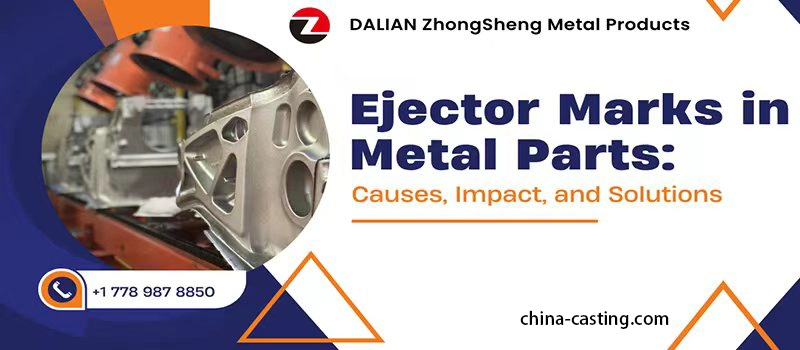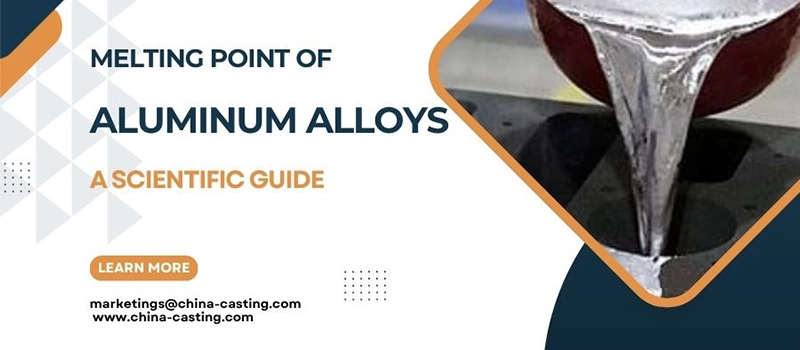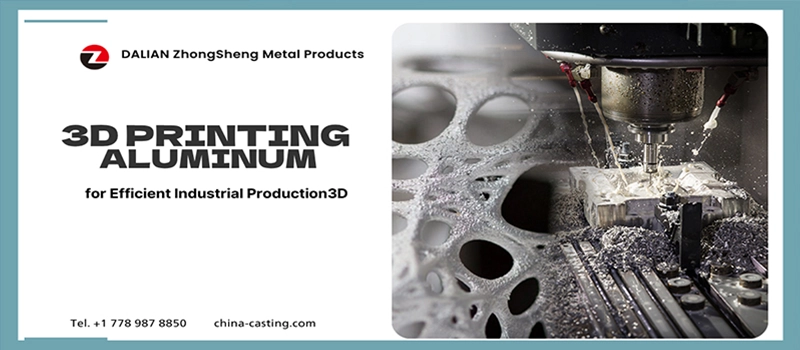According to data from the International Zinc Association and verified by multiple metallurgical studies [[resource link placeholder]], the melting point of zinc is 419.5°C, equivalent to 787.1°F or 692.6 K.
This figure might appear simple, but it defines how zinc behaves in almost every industrial process—from casting and alloying to galvanizing and coating applications.
Understanding the melting point of zinc metal is essential not only for scientists but also for manufacturers, engineers, and buyers in the metal industry. The temperature at which zinc transforms from solid to liquid determines how efficiently it can be melted, shaped, and bonded with other metals such as aluminum or copper.
In this article, I’ll share why the melting point of zinc plays such a crucial role in modern manufacturing, what affects this temperature, and how it directly impacts the performance and cost efficiency of metal products worldwide.
Understanding the Melting Point of Zinc
What Is a Melting Point?
The melting point of a substance refers to the exact temperature at which it changes from a solid to a liquid under standard atmospheric pressure. For metals, this is a critical property—it defines how the material will behave when exposed to heat during processing. A lower melting point typically means lower energy consumption during manufacturing, while a higher one may be necessary for structural stability under high-temperature conditions.
In metallurgy, the melting point of zinc is particularly noteworthy because it’s significantly lower than many other industrial metals. This unique trait makes zinc ideal for processes like die casting, coating, and alloying. Unlike refractory metals like tungsten or titanium, zinc requires far less thermal energy to melt and reshape, saving both time and cost in production lines.
What Is the Melting Point of Pure Zinc?
The melting point of pure zinc is 419.5°C (787.1°F or 692.6 K). This precise temperature has been validated by numerous scientific bodies including the International Zinc Association [[resource link placeholder]] and global materials databases [[resource link placeholder]].
| Unit | Value |
|---|---|
| Celsius | 419.5°C |
| Fahrenheit | 787.1°F |
| Kelvin | 692.6 K |
This relatively low melting point sets zinc apart from metals like copper (1085°C) or iron (1538°C). It also explains why zinc is so widely used in die casting and galvanizing, where quick melting and re-solidification are essential.
Melting Point of Zinc in Celsius, Fahrenheit, and Kelvin
Depending on where your manufacturing facility is located, you may use different temperature scales. For global buyers and engineers, it’s essential to be fluent in converting these values:
- What is the melting point of zinc in Celsius? → 419.5°C
- What is the melting point of zinc in Fahrenheit? → 787.1°F
- What is the melting point of zinc in Kelvin? → 692.6 K
Consistency in using these values is vital when preparing technical drawings, writing material data sheets, or setting temperature controls in industrial furnaces.
Even a 5–10°C misreading in melting temperature can cause process inefficiencies like:
- Premature fluidity issues
- Impurity separation failure
- Overheating and energy waste
- Mold material stress or failure
Scientific Explanation: Why Zinc Melts at 419.5°C
Zinc’s Position in the Periodic Table
Zinc (Zn), atomic number 30, belongs to the transition metals category in the periodic table. It sits in Group 12, alongside cadmium and mercury. What makes zinc unique is that it has a completely filled d-subshell (3d¹⁰) in its electron configuration:
[Ar] 3d¹⁰ 4s²

Unlike other transition metals, this filled d-orbital reduces the extent of metallic bonding interactions compared to metals with partially filled d orbitals, such as iron or copper. This is one of the main reasons why the melting point of zinc is significantly lower than other common metals used in manufacturing.
Metallic Bonding and Phase Transition
To understand why the melting point of zinc is 419.5°C, we must look at how metals behave at the atomic level.
In metals, atoms are arranged in a crystalline lattice where positively charged metal ions are surrounded by a “sea” of delocalized electrons. The strength of this metallic bonding determines how tightly atoms are held together and, in turn, how much energy is required to disrupt this structure and turn the solid into a liquid.
In the case of zinc:
- The metallic bonds are weaker than those in metals like iron or nickel.
- The atomic radius of zinc is relatively small (135 pm), meaning fewer electron interactions per volume unit.
- The closed d-subshell doesn’t participate effectively in bonding.
As a result, less energy is needed to break the bonds and initiate melting. That’s why the melting point of zinc metal is only 419.5°C, compared to iron at 1538°C or copper at 1085°C.
Why Not Higher or Lower?
This specific melting point is not random—it’s dictated by zinc’s:
- Atomic structure
- Electron configuration
- Crystal lattice arrangement (hexagonal close-packed, or HCP)
The HCP lattice of zinc is less efficient at resisting thermal vibration than face-centered cubic (FCC) lattices like those in aluminum or copper. As thermal energy increases, atoms vibrate more, and zinc’s HCP structure collapses at a lower threshold than stronger lattices.
Table: Melting Points Comparison
| Metal | Melting Point (°C) | Melting Point (°F) |
|---|---|---|
| Zinc | 419.5°C | 787.1°F |
| Aluminum | 660.3°C | 1220.5°F |
| Copper | 1085°C | 1985°F |
| Iron | 1538°C | 2800°F |
Thermal Conductivity and Specific Heat
Zinc also has a moderate thermal conductivity (116 W/m·K) and a relatively low specific heat capacity (0.39 J/g·K). These thermal properties influence how quickly zinc responds to temperature changes.
What does this mean for melting?
- Zinc heats up quickly
- It reaches its melting point faster than many metals
- The transition from solid to liquid happens rapidly and cleanly
This is ideal for casting, where precise temperature control is needed to avoid overheating or underfilling the mold. However, it also means zinc requires accurate temperature management during industrial use to avoid premature liquefaction or thermal fatigue in tooling.
Melting Point vs. Boiling Point of Zinc
Understanding the Difference: Melting vs. Boiling
Let’s first clarify the fundamental difference between melting point and boiling point—two terms often confused in metal processing.
- The melting point of zinc refers to the temperature at which solid zinc becomes a liquid: 419.5°C (787.1°F).
- The boiling point of zinc is the temperature at which liquid zinc becomes vapor: 907°C (1665°F or 1180 K) [[resource link placeholder]].
These two points are key transition thresholds in phase change science. While the melting point relates to casting and alloying, the boiling point is crucial in vapor deposition, metal refining, and high-temperature coating.

Boiling Point of Zinc: What Happens at 907°C?
At 907°C, zinc reaches its boiling point, transforming from a liquid to a gas. This is far higher than its melting point and reflects the much greater energy needed to completely break interatomic bonds and overcome atmospheric pressure.
This behavior becomes critically important when:
- Zinc is used in vacuum metallization
- Zinc vapor is applied as a protective layer (e.g. in galvanized steel)
- Impurities are removed through distillation or refining
But boiling zinc isn’t common in everyday industrial settings. Most manufacturing processes operate well below 907°C, primarily utilizing zinc’s melting point for shaping or coating.
Why the Gap Between Melting and Boiling Points Matters
The large temperature gap between the melting point (419.5°C) and boiling point (907°C) of zinc offers key advantages:
- Controlled Casting Range
Manufacturers have a wide thermal buffer to work with—melting zinc without accidentally vaporizing it. - Energy Efficiency
Processes like die casting or dip galvanizing don’t require extreme temperatures. You can melt zinc easily without approaching its boiling point, saving on energy and furnace wear. - Safe Handling
Zinc fumes begin to form near the boiling point. Operating below this threshold minimizes health risks and environmental hazards, which are critical in modern workplace compliance (e.g. OSHA, REACH). - Thermal Window for Alloys
Alloy engineers use this gap to create new materials with desirable melting and flow behaviors without risking boiling-off any components.
Applications that Depend on the Boiling Point
While most applications rely on melting point of zinc metal, certain high-end or scientific use cases do depend on its boiling point:
- Zinc vapor deposition (ZVD)
Used in creating semiconductor films, anti-corrosion layers, or conductive coatings. - Zinc refining via distillation
Impurities are separated by heating zinc past its boiling point in vacuum systems. - Nanotechnology
Boiling zinc enables the production of zinc oxide nanoparticles via vapor-phase condensation.
Still, for 90% of industrial buyers and engineers, it’s the melting point of zinc in Celsius—not the boiling point—that guides production workflows.
Melting Point of Zinc Alloys
Why Zinc Is Commonly Alloyed
Zinc on its own is already widely used thanks to its low melting point (419.5°C) and excellent corrosion resistance. However, in many industrial applications, pure zinc is not enough—we need better mechanical strength, improved wear resistance, and enhanced castability.
That’s where zinc alloys come into play.
By combining zinc with elements like aluminum, copper, or magnesium, manufacturers can fine-tune performance characteristics—especially melting behavior.
Melting Point of Zinc-Aluminum Alloys
Zinc-aluminum alloys (often called ZA alloys) are among the most popular zinc-based alloys used in die casting. The most common ones include ZA-8, ZA-12, and ZA-27, where the number indicates the approximate aluminum content in percent.
Here’s how their melting points compare:
| Alloy Type | Melting Point (°C) | Melting Range (°F) |
|---|---|---|
| ZA-8 | 381–387°C | 718–729°F |
| ZA-12 | 392–400°C | 738–752°F |
| ZA-27 | 495–505°C | 923–941°F |
Notice that some zinc-aluminum alloys melt at lower temperatures than pure zinc, while others like ZA-27 have higher melting points due to increased aluminum content. This impacts mold design, cooling rates, and heating cycles in production.
Melting Point of Zinc and Copper (Brass)
Copper is another common additive in zinc alloys, especially in the creation of brass. When zinc and copper are alloyed, the melting point increases significantly depending on the ratio.
- 60% copper + 40% zinc (typical brass): Melting point around 900–940°C
- 70% copper + 30% zinc: Melting point up to 950°C
This is much higher than the melting point of pure zinc, meaning brass is not suitable for low-temperature casting, but is ideal for machined parts, gears, valves, and aesthetic finishes.
The increased copper content adds hardness and strength, but also raises melting point and energy demands during processing.
Melting Point of Other Zinc Alloys in Use
Aside from aluminum and copper, zinc can also be alloyed with:
✅ Magnesium (Zn-Mg Alloys)
- Melting point: 340–420°C
- Used in lightweight structural components
- Often favored in aerospace and automotive applications
✅ Tin (Zn-Sn Alloys)
- Melting point: 200–300°C
- Very low melting range
- Common in soldering materials
✅ Lead (Zn-Pb Alloys)
- Melting point: varies with ratio; around 320–370°C
- Used in specialized battery or corrosion-resistant environments
- Environmental concerns have reduced its use globally
Each alloy’s melting point is adjusted based on the purpose:
- Low-melting for solders
- Mid-range for die casting
- High-melting for load-bearing components
This flexibility is part of what makes zinc such a versatile base metal.
Melting Point of Zinc Compounds
Why Zinc Compounds Matter in Industry
While most people associate zinc with its metallic form, zinc also forms several key compounds that are vital in industrial, chemical, and manufacturing processes.
Some of the most common zinc compounds include:
- Zinc oxide (ZnO)
- Zinc chloride (ZnCl₂)
- Zinc sulfate (ZnSO₄)
- Zinc sulfide (ZnS)
These compounds are not used in casting like metallic zinc, but they are essential in:
- Paints and coatings
- Ceramics and glass production
- Fertilizers and animal feed
- Battery components
- Electronics and semiconductor industries
Each of these has its own melting point, which is significantly different from the melting point of pure zinc metal (419.5°C).
Melting Point of Zinc Oxide (ZnO)
Zinc oxide is one of the most widely used compounds of zinc, especially in:
- Rubber manufacturing (as an activator)
- Ceramics
- Electronics (varistors, diodes)
- Sunscreens and skincare
Melting Point of Zinc Oxide:
- 1975°C (3587°F)
- Much higher than the melting point of zinc in Celsius
- Does not melt easily under standard industrial furnace conditions
This high melting point is due to:
- Strong ionic bonds between zinc and oxygen
- Crystalline lattice structure that resists thermal decomposition
Melting Point of Zinc Chloride (ZnCl₂)
Zinc chloride is a highly soluble salt used in:
- Soldering fluxes
- Galvanizing baths
- Wood preservatives
- Chemical synthesis
Melting Point of Zinc Chloride:
- 275°C (527°F)
- Lower than the melting point of zinc
- Easy to melt and handle in laboratory and production environments
Its relatively low melting point makes it useful in low-temperature metallurgical processes, especially for removing oxides and impurities from base metals.
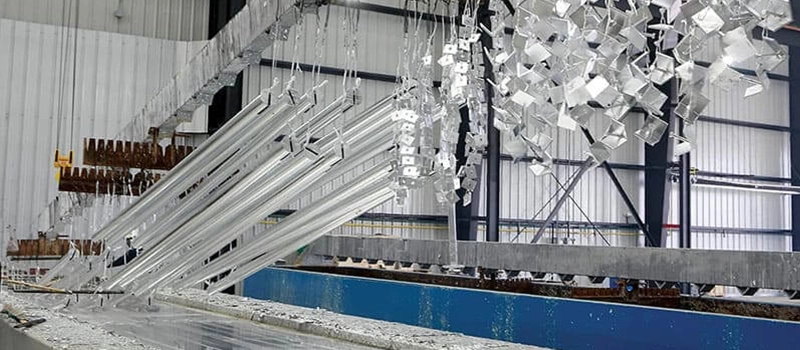
Melting Point of Zinc Sulfate (ZnSO₄)
Zinc sulfate is a colorless crystalline solid used in:
- Agricultural micronutrient fertilizers
- Animal feed additives
- Electroplating baths
- Medical applications (eye drops, supplements)
Melting Point of Zinc Sulfate:
- 680°C (1256°F)
- Higher than zinc chloride, lower than zinc oxide
- Decomposes at high temperatures before reaching full liquid phase
Zinc sulfate doesn’t melt cleanly. Instead, it often breaks down chemically, releasing sulfur dioxide (SO₂) and other gases during heating. This makes its thermal behavior less predictable than elemental zinc or alloys.
Melting Point of Zinc Sulfide (ZnS)
Zinc sulfide is used in:
- Photoluminescent materials
- X-ray screens
- Pigments (as a white pigment base)
- Infrared optics
Melting Point of Zinc Sulfide:
- 1700°C (3092°F)
- Like zinc oxide, it resists melting under conventional conditions
ZnS’s strong ionic-covalent bonds and crystal lattice require extreme heat to disrupt. That’s why it’s a popular material for high-heat, high-durability applications in electronics and optics.
Zinc’s Melting Behavior in Manufacturing
Controlled Melting: From Solid to Liquid
In a real-world manufacturing environment, melting zinc is far more than simply heating it to 419.5°C—it’s a precisely controlled phase transition that impacts the quality of every part produced.
When zinc is heated near its melting point, it enters a critical phase where:
- The solid crystalline structure begins to break down
- Surface oxidation starts to occur
- Elemental zinc begins to liquefy from the grain boundaries inward
Unlike some metals that melt over a broad temperature range, zinc transitions rapidly from solid to fully liquid within a very narrow window, making it ideal for fast-cycle casting—but also more sensitive to temperature fluctuations.
Need Help? We’re Here for You!
The Role of Purity During Melting
The melting point of zinc metal is highly dependent on purity. Industrial-grade zinc typically contains minor traces of:
- Lead (Pb)
- Cadmium (Cd)
- Iron (Fe)
- Aluminum (Al)
These impurities influence how smoothly zinc melts:
- Lead and cadmium tend to lower the melting point slightly but can also promote grain boundary segregation, weakening the final product.
- Iron and aluminum may not dissolve easily, leading to dross or slag formation during melting.
Therefore, controlling the purity of zinc feedstock is critical. During melting, impurities may:
- Rise to the surface as oxides or inclusions
- Stay suspended and cause casting defects
- React with oxygen and alter fluidity
Foundries must skim surface dross frequently and may add fluxing agents to reduce oxidation and improve melt cleanliness.
Zinc’s Fluidity at Melting Temperature
Once molten, zinc displays excellent fluidity, even at just above its melting point. This is one reason why it’s so suitable for casting complex parts.
However, there are some caveats:
- If held at too high a temperature (>460°C), molten zinc becomes reactive with oxygen and moisture in the air, forming zinc oxide (ZnO) on the surface.
- Zinc oxide films can trap gas or inclusions, resulting in porosity or cracks in the finished parts.
- Zinc has a relatively high vapor pressure, and at temperatures approaching 500°C, zinc fumes (Zn vapor) may start to form.
These fumes are:
- Hazardous to inhale
- Indicative of overheating
- A cause of material loss and inconsistent alloy composition
Hence, most manufacturers maintain the molten zinc temperature at 430–450°C, just 10–30°C above the melting point, to ensure:
- Sufficient fluidity
- Minimal vapor formation
- Reduced oxidation rate
Impact of Melting Equipment and Atmosphere
The behavior of zinc during melting also depends on the type of furnace used:
- Crucible furnaces: Common for small batch melting; slower to heat but stable
- Induction furnaces: Provide uniform heating and rapid temperature rise; often used in automated production lines
- Resistance furnaces: Suitable for precise temperature control, but may cause stratification if improperly configured
The atmosphere in which zinc is melted matters, too. In open-air melting, oxidation is inevitable. Some operations use:
- Protective gas shielding (e.g., nitrogen or argon)
- Flux covers to reduce exposure to oxygen
- Vacuum melting for ultra-high purity casting, though rare for zinc due to cost
Solidification After Melting
Understanding how zinc behaves during cooling and re-solidification is equally important. Due to its narrow melting range:
- Zinc solidifies quickly, ideal for fast production cycles
- But rapid cooling may cause shrinkage porosity, unless properly gated and vented
- Grain structure can be fine or coarse, depending on the cooling rate and alloying elements
Proper temperature control before pouring ensures:
- Uniform molecular structure
- Minimal internal stress
- Improved mechanical strength and surface finish
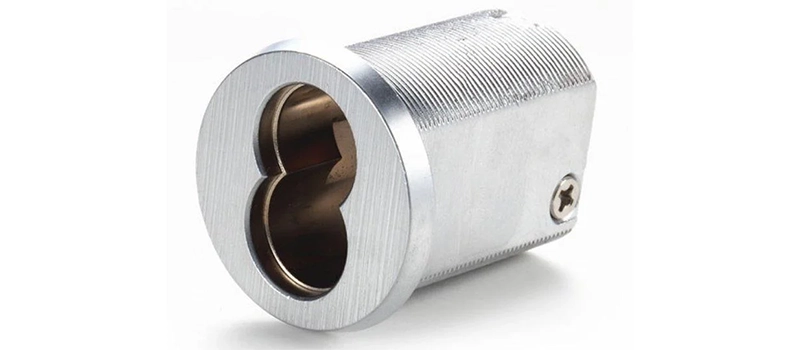
What Affects the Melting Point of Zinc?
1. Impurities and Alloying Elements
The melting point of zinc—officially recorded at 419.5°C—applies to pure zinc under standard atmospheric pressure. However, most industrial zinc is not 100% pure, and this chemical composition can shift the melting point significantly.
🔧 Common impurities in zinc:
- Lead (Pb): tends to lower the melting point slightly
- Iron (Fe): may form intermetallic phases that alter melting behavior
- Cadmium (Cd): lowers the melting point and introduces vaporization risks
- Aluminum (Al): commonly used for alloying, slightly increases melting point
These elements can either:
- Depress the melting point (known as melting point depression)
- Widen the melting range, making the material melt less uniformly
- Form eutectic points—special compositions with much lower melting temperatures than either component alone
For example, in zinc-aluminum alloys, the melting point can drop to as low as 381°C, depending on the percentage of aluminum used.
This is especially relevant in high-precision casting or plating industries, where consistency in melting behavior is critical.
2. Pressure Conditions
Just like water boils at a lower temperature on a mountain, zinc’s melting point can be influenced by atmospheric pressure.
🔬 Under standard conditions (1 atm):
- Melting point = 419.5°C
🔬 Under vacuum:
- The melting point remains close, but zinc begins to vaporize more rapidly after melting
- Zinc’s vapor pressure is high, which causes material loss and oxidation if not properly controlled
🔬 Under elevated pressure:
- Slight increase in melting point
- Stabilizes liquid phase longer, useful for high-pressure die casting
While the effect of pressure on melting point is less dramatic than in boiling, it still matters in environments such as:
- Vacuum furnaces
- Autoclave sintering
- Aerospace component manufacturing
3. Crystal Structure and Grain Size
Zinc has a hexagonal close-packed (HCP) crystalline structure, which is inherently less stable at high temperatures compared to face-centered cubic (FCC) structures like those of aluminum and copper.
Factors that affect melting behavior here include:
- Grain boundaries: Smaller grains melt more easily due to higher surface energy
- Internal stresses: Cold-worked zinc may show slight variations in melting onset
- Dislocations or lattice defects: Act as points of early melting or softening
These microscopic structural differences may not change the melting point of zinc in Celsius by dozens of degrees, but they influence the behavior at the melting threshold:
- Sudden collapse in structure
- Uneven melting
- Hot cracking risk
4. Heating Rate and Thermal Gradient
Believe it or not, how quickly you heat zinc can also influence its observed melting behavior.
- A fast heating rate may cause the outer surface to melt before the interior is thermally stable
- Uneven heat distribution can lead to partial melting, thermal shock, or dross formation
That’s why industrial furnaces use multi-zone heating and automated temperature ramps to ensure:
- Uniform internal temperature
- Smooth transition to liquid state
- Less oxidation and thermal stress
Proper melt control also minimizes issues like:
- Entrapped gases
- Surface blistering
- Localized over-melt and metal spatter
5. Alloy Design and Phase Diagrams
Zinc is a base element in many alloys. When mixed with metals like:
- Aluminum
- Magnesium
- Copper
- Tin
…it forms complex phase diagrams. These diagrams show:
- Solidus (where melting starts)
- Liquidus (where full melting is achieved)
- Eutectic points (sharp melting transitions)
For example:
- In a zinc-copper system, zinc lowers copper’s melting point until a certain threshold, then begins raising it again
- In ZA alloys, designers target eutectic points to control flow, solidification rate, and melt viscosity
Need Help? We’re Here for You!
Without knowing where zinc fits into these systems, it’s easy to misjudge the true melting range, leading to production inconsistencies.
Conclusion
The melting point of zinc, officially recorded at 419.5°C (787.1°F), may seem like a simple figure—but in reality, it governs the way we cast, process, and control this essential metal. From the purity of the material to the melting behavior of alloys and compounds, understanding zinc’s thermal properties is fundamental for every successful manufacturing decision. Whether you’re engineering precision parts or managing thermal processes, mastering zinc’s melting behavior means mastering quality and efficiency.


